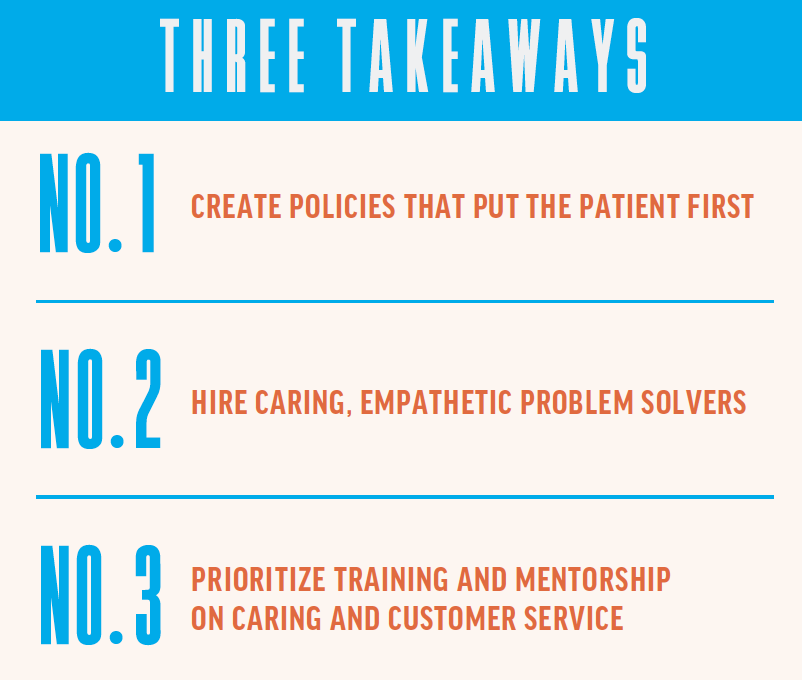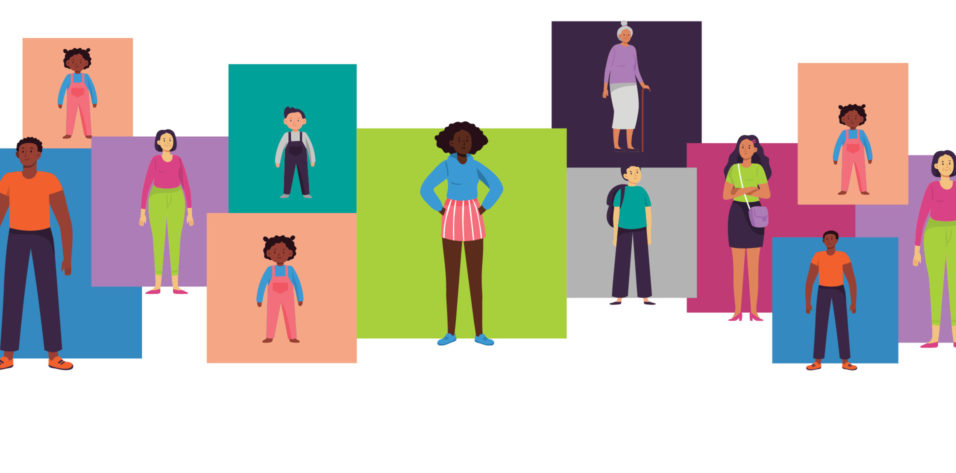
Most businesses have good to great customer service, but few have exceptional service. Conglomerates such as the Ritz Carlton, Zappos, Disney, Starbucks, and Nordstrom, which most would agree have exceptional customer service, have an unconditional commitment to giving the highest level of service to every person regardless of their circumstances. The Ritz Carlton represents the gold standard of customer service in the hospitality industry. The hotel gives its employees incentive and control to deliver an amazing customer experience and prioritize the customer over regulations and policy. Zappos offers a 365-day return policy to its customers. Employees at the online retailer are given free reign to meet customer needs. The exceptional customer service delivered by both companies boils down to caring.
The ophthalmology market is highly competitive. Reimbursement is declining, health care systems exert a strong influence on where patients go for surgery, and health care plans dictate where patients receive care. The market is full of advertisements by local competitors, and online reviews are currency.
Optimizing the patient experience within your office is critical. You need fans who commit to your practice for life and shout from the mountaintops how great their experiences at your practice are.
START WITH YOUR TEAM
Start with your people—the employees you trust to care for your patients. I learned long ago that hiring someone who does not value caring for the patient above all else fills a void temporarily but doesn’t work out in the long term. It’s better to be short-staffed than to have the wrong person on the team.
At our practice, we hire empathetic problem solvers. These caring individuals are compassionate toward others and have high levels of emotional intelligence. Their attitude can be characterized as “let me see what I can do,” instead of “I don’t know.” During the interview process, we pose questions about specific scenarios, and applicants’ answers give us insight into how much they focus on the customer. They also complete personality and cognitive profile testing. Most importantly, applicants shadow current employees in the practice for half a day to observe how they interact with our staff and patients. Do applicants lean in, or do they hold back? Are they in tune with the needs of the patients and the staff members around them?
SELL THE INVISIBLE
Our interview process may seem tedious, but it allows us to find staff members who are able to sell the invisible. Selling the invisible means meeting patients’ unspoken needs. We note the special needs and preferences of our patients on the demographic screen of our electronic health record system so they do not have to share this information every time they come into the office. If a patient requested a wheelchair over the phone or at their first visit, one will be waiting for them at the entrance to the office on subsequent visits.
My team uses the acronym FORD to help them capture patients’ unique attributes:
Family. Learn something noteworthy about their family such as an upcoming wedding or an expected grandchild.
Occupation. Ask about their current or, if retired, prior occupation.
Recreation. Find out a patient’s favorite form(s) of recreation. This can be a conversation starter and facilitate discussions about their vision preferences.
Dreams. Take note of each patient’s dreams, including what they wish to see with vision correction. Prompt them with questions like asking if they want to open their own business one day or if they are planning the trip of a lifetime upon retirement.
The acronym trains staff members how to listen to patients and build strong relationships.
REINFORCE THE GOAL
We revisit the foundational pillar of caring and celebrate our wins at each individual team meeting and every full staff meeting. We acknowledge negative feedback as an opportunity for discussion and improvement. It’s okay to fail if we fail forward. We listen to our patients and align what we do with their needs rather than expect them to conform to how we operate—the situation in most health care environments.
Each week, we receive survey responses and reviews from patients that identify individual staff members by name. Most of the comments describe how caring our staff is, how well cared for respondents’ felt, and how much staff members seem to enjoy their jobs. Some comments focus on patients’ vision, but most relate to how they were treated. These comments are shared with the team so that they know that their efforts are appreciated.
CONCLUSION
The hard skills are easy to teach. It’s the soft skills that must be nurtured to provide an experience that creates patients for life. Assembling a team that wows patients takes work. Adhering to the three takeaways listed in the accompanying sidebar can help practices win patients for life.



